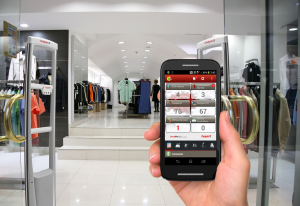 The holidays are over and looking at your sales, revenue, expenses, profits and inventory, you are probably realizing you had a good year, or a year where inventory has disappeared and don’t know where it went. If the strategy to prevent shrinkage in your store hasn’t workout, have you looked into the reason why? Is employee theft a problem you have overlooked? Looking at your data carefully, you can analyze and probably pin point a few problem areas that are not being addressed, and then you can probably find a solution to the problem or at the least address the problem before it gets out of hand.
The holidays are over and looking at your sales, revenue, expenses, profits and inventory, you are probably realizing you had a good year, or a year where inventory has disappeared and don’t know where it went. If the strategy to prevent shrinkage in your store hasn’t workout, have you looked into the reason why? Is employee theft a problem you have overlooked? Looking at your data carefully, you can analyze and probably pin point a few problem areas that are not being addressed, and then you can probably find a solution to the problem or at the least address the problem before it gets out of hand.
For more about this topic follow these links below.
Are Retailers Selling Shoplifting Tools?
Boosters are savvy in their methodology of offending. They often find creative ways in which to conceal property when shoplifting—in their clothing, via a special “booster bag,” etc. However, occasionally they capitalize on resources provided by the very location they intend to victimize.
While shopping in a nationally known chain drug store, I found an inexpensive, insulated six-can cooler bag, which appeared to have an aluminum lining, sitting on an aisle shelf out of view of the customer service area. When I saw this, I found it to be an aluminum-lined potential booster bag, the use of which is a felony in many states. This sparked my interest; is it possible that retail locations unknowingly stock booster supplies?
I purchased the cooler bag and went to one of my corporate retail colleagues to test the bag with two different types of electronic article surveillance (EAS) tags; the classic hard tags and UPC-style sticker tags. After a series of tests, I noted the following results:
• Effective in disrupting the UPC-style EAS stickers. I would have to hold the bag flush against the tower for the alarm system to activate.
Police holiday operations see some success
INCREASED PATROLS, SPECIAL DETAILS CURB CRIME
Local police efforts to deter holiday crime saw some positive results.
The Lemoore Police Department conducted a number of special details to prevent holiday crimes and educate citizens to defend themselves.
Cmdr. Maggie Ochoa said police set up informational booths where officers and civilian staff answered questions from citizens and distributed educational handouts about drugs and gangs.
Officers also conducted 39 random checks on registered sex offenders in the Lemoore city limits.
Eight of those offenders were found to be out of compliance or in violation of their registration requirements.
Ochoa said plain-clothed police officers also patrolled areas where there had been reports of thefts, suspected drug use and gang activity.
Hiding the Merchandise
Favorite Shoplifter Devices



 Shoplifting costs the retail industry million of dollars daily.
Shoplifting costs the retail industry million of dollars daily. 




